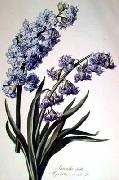Wholesale Oil Painting No Minimum |
|||||||||||
|
|
|||||||||||

|
|||||||||||
|
|
|
||||||||
Cornelis van Spaendonck PrintsDutch 1756-1840 Cornelis van Spaendonck (7 December 1756 - 22 December 1839) was a Dutch painter who was a native of Tilburg. Spaendonck initially worked under artist Guillaume-Jacques Herreyns (1743-1827) in Antwerp, and in 1773 moved to Paris to study and work with his brother, floral painter G??rard van Spaendonck (1746-1822). From 1785 to 1800, Cornelis van Spaendonck was head of the porcelain works at S??vres. Due to difficulties encountered as an administrator, he was relieved of his directorship in 1800, but remained at S??vres as a designer and artist until 1808. In 1789 Spaendonck became a member of the Acad??mie des Beaux Arts. He painted throughout his lifetime, and displayed his works at the Salons of Paris until 1833. Most of Spaendonck's works were created with oils and gouache, and he is remembered for his lush still-lifes of flowers. Among his paintings were subjects such as De Fleurs Et Fruits, Vase De Fleurs, Bouquet De Different Fleurs, Fleurs Du Jardin, Corbeille Fleurs, et al. At his death in 1840 there were 29 paintings in his studio, which were auctioned soon afterwards. |
||||||||
|
|
||||||||
Hyacinth
Hyacinth Painting ID:: 3756 |
14inx21 14inx21 |
|||||||
|
|
||||||||
|
unknow artist Hyacinth 1680s Marble, under life-size Galleria di Palazzo Reale, Genoa Parodi created a remarkable set of four statues for the garden of the Palazzo Durazzo in Genoa. Drawn from Ovid's Metamorphoses, his figures were conceived as pairs and shared an appropriately horticultural theme of flowers: one pair featured Clytie and Hyacinth, who were beloved of Apollo and changed into flowers after their death. The interest here is very much the process of transformation - Clytie into a sunflower, Hyacinth into the flower that bears his name. Although the subject matter is somewhat unusual, Parodi's models are even more remarkable, for he has adapted them from late works by Bernini in an entirely different context. Clytie is a witty parody of the master's Truth from his unfinished Truth Unveiled, and her sunflower is derived from the sun held by Bernini's figure, but Hyacinth follows the unexpected example of the Angel with the Superscription from the Ponte Sant'Angelo in Rome, an intensely spiritual meditation that could hardly seem less appropriate. Artist: PARODI, Filippo Painting Title: Hyacinth , 1651-1700 Painting Style: Italian , sculpture Type: mythological |
||||||||
|
|
||||||||
|
Prev Next
|
||||||||
|
|
||||||||
|
Related Paintings to unknow artist :. |
||||||||
|
|
||||||||
|
CONTACT US |

